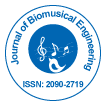Review Article
Music as Medicine: The Science of How Music Can Help Induce Sleep, Relieves Anxiety and Pain in Patients
Trent W Nichols*
Microbiom Netics, Hanover, PA, USA
- *Corresponding Author:
- Trent W Nichols Jr. MD
CNDD, AMRI
721Ash Dr. Hanover PA 17331, USA
Tel: 717-6335540
E-mail: twnicholpa@comcast.net
Received Date: September 07, 2015; Accepted Date: October 28, 2015; Published Date: November 06, 2015
Citation: Nichols TW (2015) Music as Medicine: The Science of How Music Can Help Induce Sleep, Relieves Anxiety and Pain in Patients. J Biomusic Eng 3:110. doi:10.4172/2090-2719.1000110
Copyright: © 2015 Nichols TW. This is an open-access article distributed under the terms of the Creative Commons Attribution License, which permits unrestricted use, distribution, and reproduction in any medium, provided the original author and source are credited.
Abstract
This manuscript was abstracted from a lecture for grand rounds for medical physicians. This paper explores the science of how music can help induce sleep relieves anxiety, and pain in patients. This method has been practiced from decades as a way to treat neurological conditions. Now, advances in neuroscience and brain imaging are revealing what is actually happening in the brain as patients listen to music or play instruments and how the therapy works. It depends upon “frequency following” response, a naturally occurring phenomenon where the human brain has a tendency to change its dominant EEG frequency towards the frequency of a dominant external stimulus. Musical rhythm has been hypothesized to be a zeitgeber (ie pacemaker) with its ability to entrain neurons dependent on the strength of its signal relative to spurious signals from higher neural centers that introduce noise into the central pattern generator.. With fMRI brain imaging, the neuroscience of the effect of music can now be mapped to various regions of the brain. Intense musical emotion described as “thrills and chills” is associated the ventral striatum, amygdala, midbrain and frontal cortex (regions involved in reward, motivation and arousal. The Mozart effect is discussed. Live harp music has been shown to be beneficial in preterm infants in neonatal intensive care is associated with an reduced heart rate and deeper sleep at 30 minutes after therapy parameters. Studies on the efficacy of music therapy (MT) were done on pain and anxiety in children and adults undergoing clinical procedures. Overall MT showed a significant reduction in pain and anxiety. Clinical studies of music in adults undergoing procedures were also found to be efficacious. Music can also be used to help ease the journey of the terminally ill. Future apps for smart phone could predict how “music can truly be uses as medicine!”
